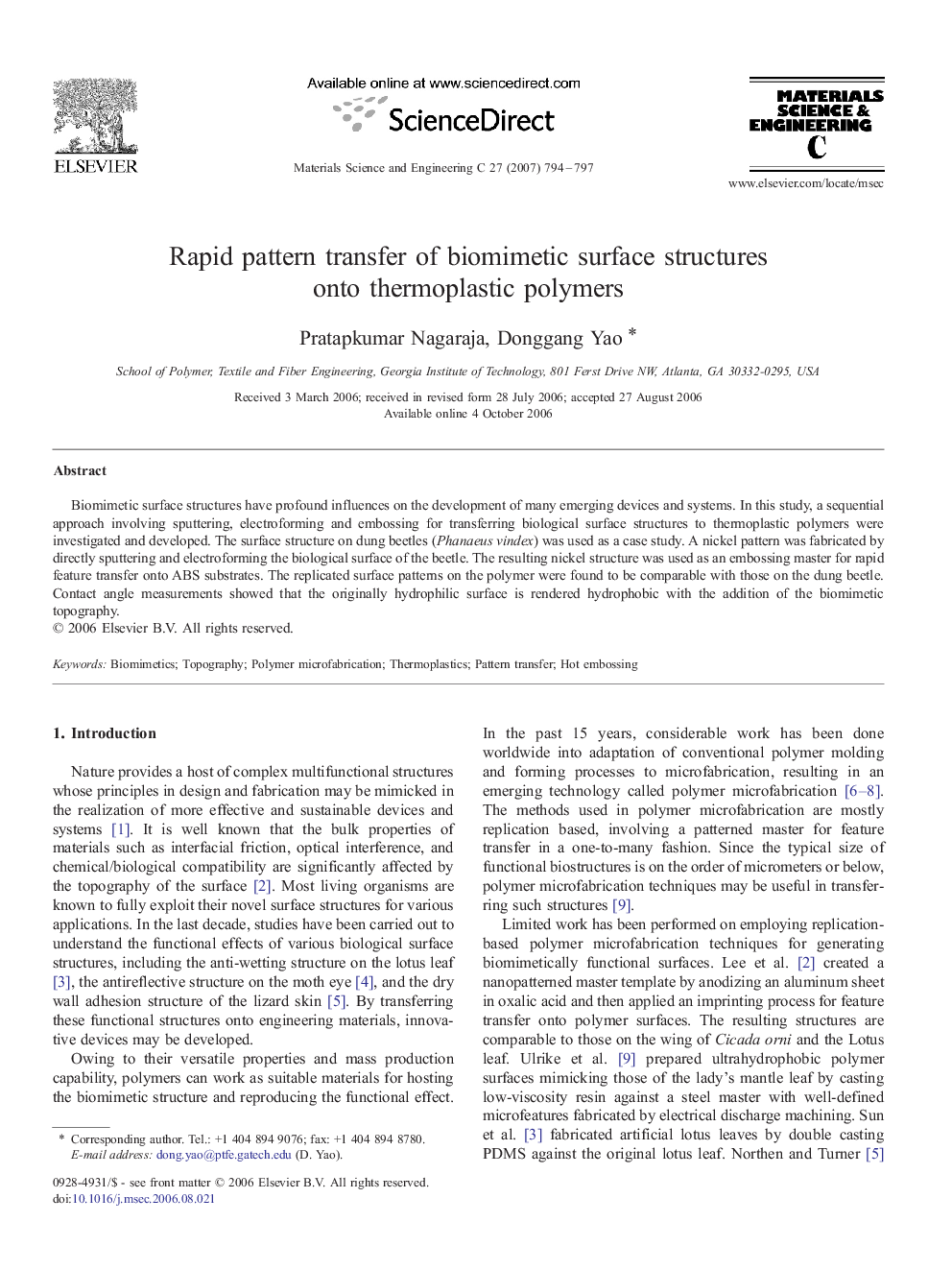| Article ID | Journal | Published Year | Pages | File Type |
|---|---|---|---|---|
| 1430982 | Materials Science and Engineering: C | 2007 | 4 Pages |
Biomimetic surface structures have profound influences on the development of many emerging devices and systems. In this study, a sequential approach involving sputtering, electroforming and embossing for transferring biological surface structures to thermoplastic polymers were investigated and developed. The surface structure on dung beetles (Phanaeus vindex) was used as a case study. A nickel pattern was fabricated by directly sputtering and electroforming the biological surface of the beetle. The resulting nickel structure was used as an embossing master for rapid feature transfer onto ABS substrates. The replicated surface patterns on the polymer were found to be comparable with those on the dung beetle. Contact angle measurements showed that the originally hydrophilic surface is rendered hydrophobic with the addition of the biomimetic topography.
